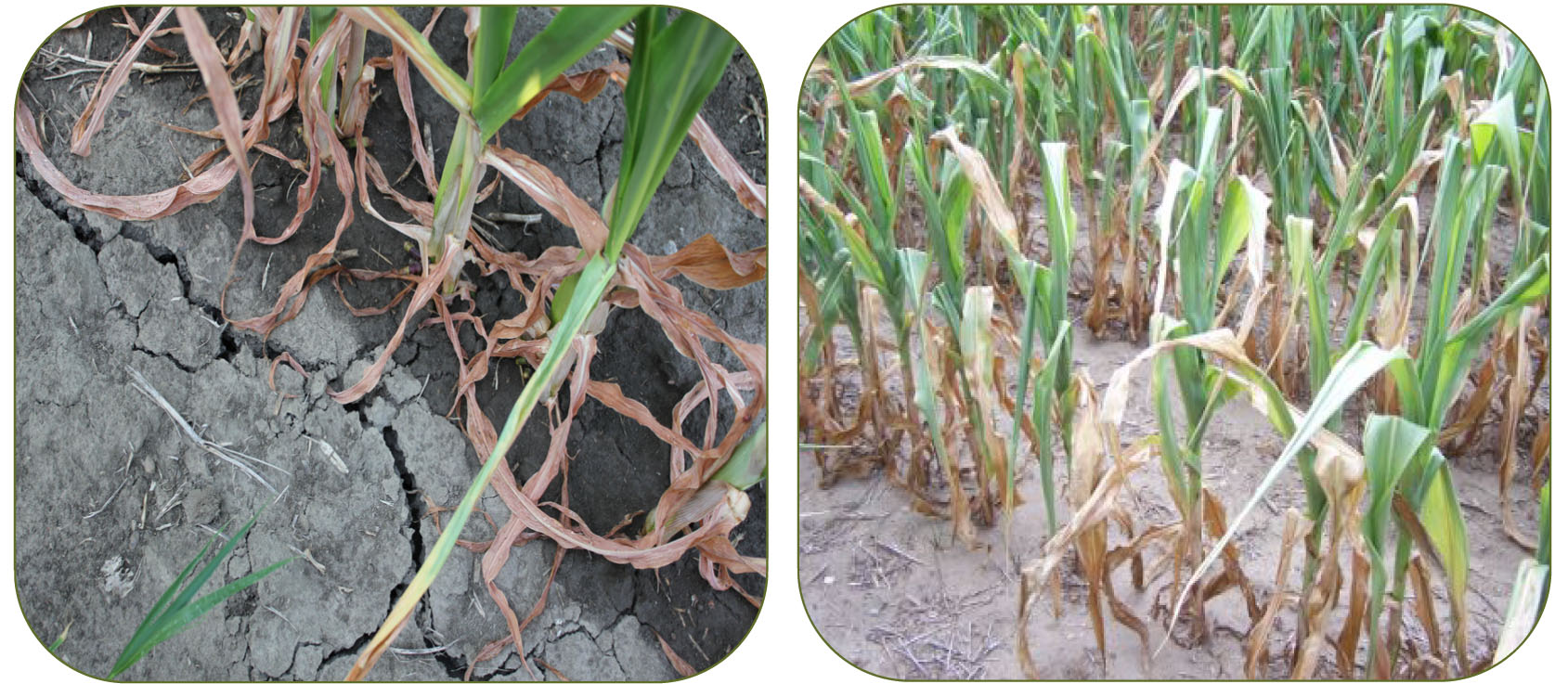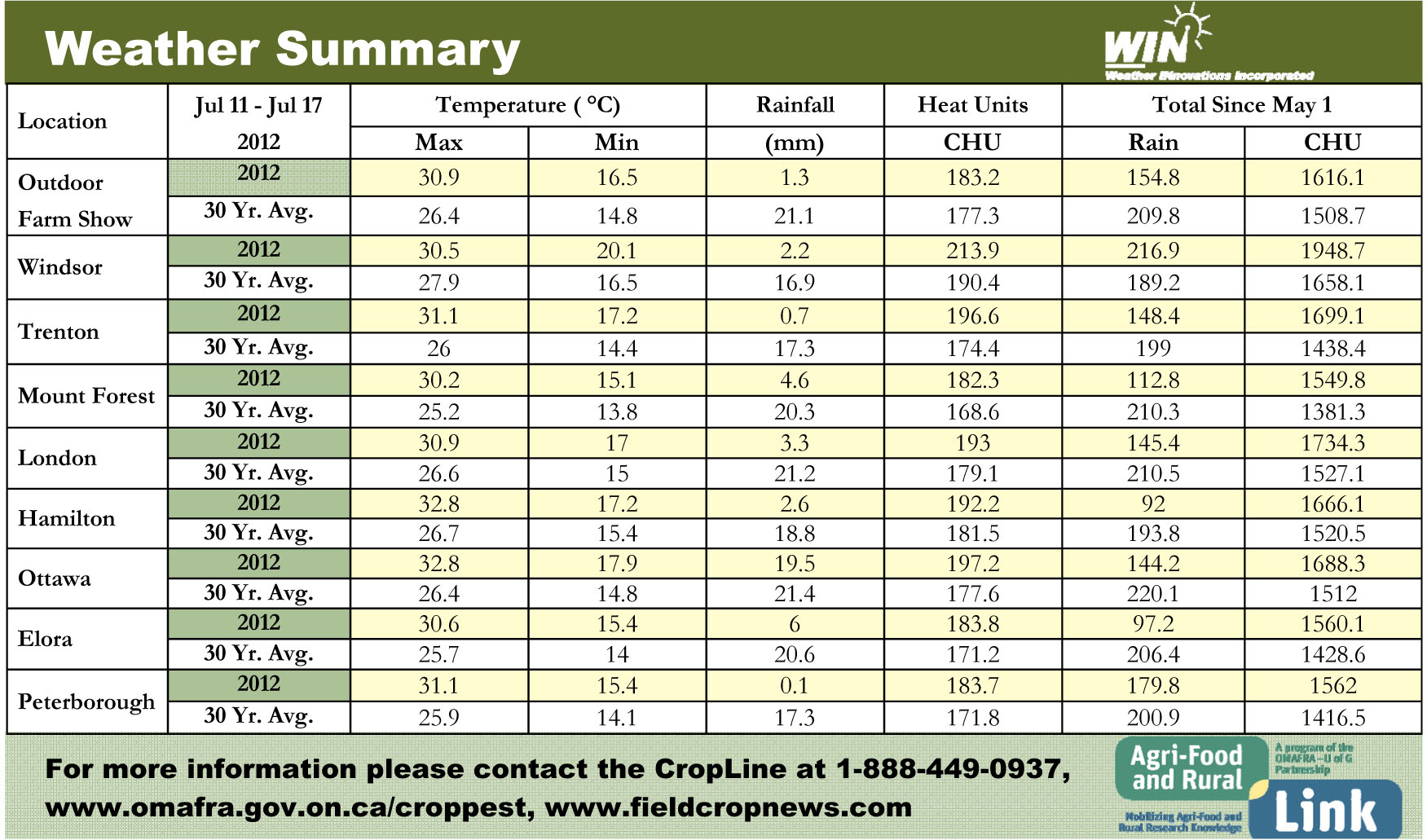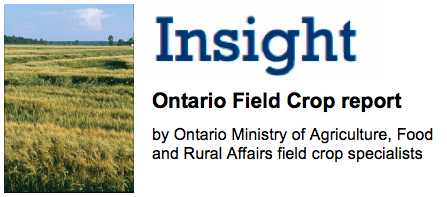Edible Beans: Brian Hall
The majority of edible beans are in full flower. Scout fields during pod fill for western bean cutworm and tarnished plant bug (TPB). Damage reduces yield and increases the amount of beans graded as pick. Tarnished plant bugs often migrate into edible bean fields from nearby orchards or recently harvest alfalfa stands. Control plant bugs when one or more bugs per plant are found during flowering to green pod stage. The risk of Anthracnose and white mould is extremely low under present hot, dry conditions. The greatest economic losses from white mould occur from infections during early flowering that infect the main stem. Fungicides for anthracnose and white mould control provide 10-14 days protection. Anthracnose can develop quite rapidly under moderate temperatures (250 C) and with driving rains, which spread the disease. Flag suspect areas and monitor plants for spread of the disease up to late pod fill stage. Movement of animals, people, or equipment through fields will easily spread the disease especially when foliage is wet.
Canola: Brian Hall
Early planted canola is 10-14 days away from being harvested. Canola that is severely moisture stressed may try to compensate for poor initial pod set by producing secondary branching when rain is received. Side branches can contribute additional yield when pod set is reduced on the main raceme. Canola matures from the bottom upward and outward, so branches mature later than the main raceme. It will be important to walk fields to judge crop maturity for appropriate timing of swathing or pre harvest aids by looking at the overall seed colour change rather than by just colour change on the main raceme. Evaluate a number of areas in the field by looking at individual plants to see where the majority of yield will come from. Seed colour changes typically by 10% or faster every 2-3 days. Green stalks, perennial weeds, and uneven ripening can all be a problem at harvest. Delays in harvest can result in significant pod shelling and reducing yields. Pre-harvest products to aid harvest can even-out and speed crop dry down and allow for timely harvest. Monitor canola during flowering early pod fill for high tarnished plant bug numbers.
Corn: Greg Stewart
Much of the provinces corn crop lies somewhere between tassel emergence and silk browning. Moisture stress is quite severe in most of the province with the exception of a few areas. Poor pollination is confirmed in the dry areas on the soils with low water holding capacity (sands or clays). The majority of the crop on medium textured soils is still recovering enough at night to allow for reasonably successful pollination. In some severe cases where pollination has been extremely poor, or where the plant has no ears, producers are considering options for removing the crop as silage. For more information on this issue please see www.fieldcropnews.com/?p=4243
Detecting successful pollination without waiting for the kernel blisters to appear, can be done by carefully removing the husks, turning the ear upside down and gently tapping it. The majority of silks should fall off indicating successful pollination. Silks that remain attached indicate kernels that have not been pollinated.

Left: Corn plants desperately pulling in a 1 mm rainfall that occurred on the morning of July 17 in Winchester. Right: An example of moisture stressed corn during the week of July 16th.




